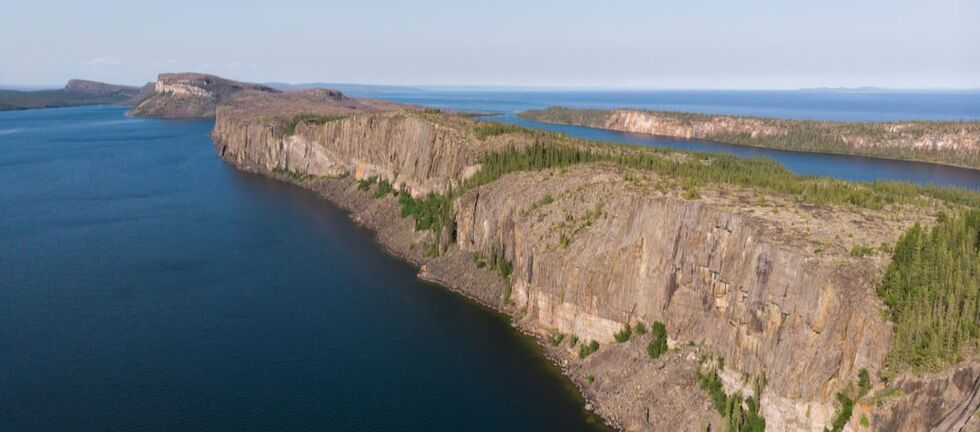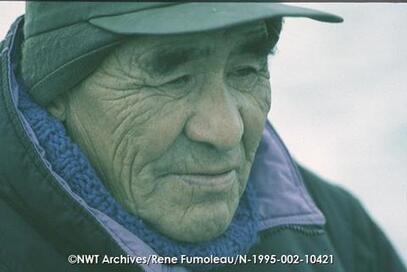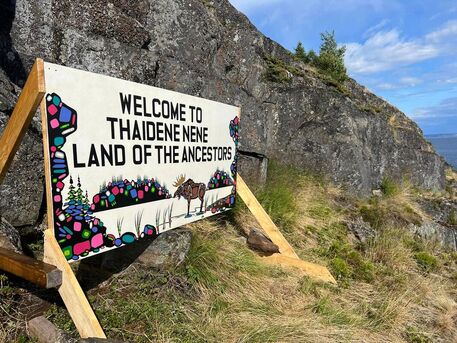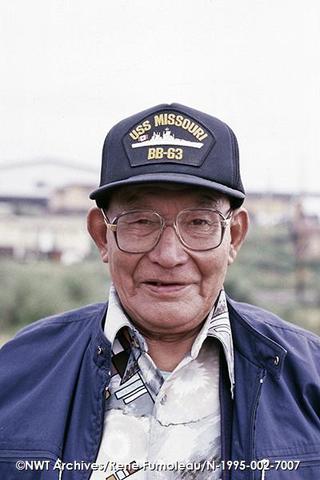Betsı̨ı̨ghıé (Utsingi Point)
Betsı̨ı̨ghıé means the water is alive in Dënesųłıné yatıé. Near to Utsingi Point, Betsı̨ı̨ghıé is a sacred place for Łutsël K’é Dene. When we pass by the weathered limestone cliffs here, we do so in silence. We also stop to make an offering to the lake, a gift of tobacco or spruce bough or something else of value for the beings that live in the water there. We ask that visitors to Thaidene Nëné do the same.
|
“My late granny used to tell me stories about the water that’s alive at Betsı̨ı̨ghıé. People use to travel through Betsı̨ı̨ghıé. Before they travel through Betsı̨ı̨ghıé, they stop on island nearby. Before, if you make noise around Betsı̨ı̨ghıé, the water used to act up, creating a whirlpool and bubbles. On the islands they make their young children sleep so they would have safe journey. They do that because children are noisy. After the children sleep only then they travel around the point of Betsı̨ı̨ghıé. That time they used only canoes. Now there is hardly any whirlpool or the water acts up. Sometimes it still does. People pay respect by offering tobacco or shells to this day. You have to be extra careful.”
- Noel Abel |
|
One moonlight night, when the late Antoine Michel and his wife, Mary Jane, were boating home from hunting caribou, they saw the creature.
“We seen a rock there. I thought it was a rock first time, there was seagulls around it. I just turned away from it, I didn't want to hit it. It just went down. I felt the waves, and then I just took off. I didn't take a look back.” |
|
Utsingi Point is the watery gateway to the Thaidene Nëné Indigenous Protected Area. It is located at the southern tip of long peninsula we know as Golaá Ga (the Pethei Peninsula in English). There is a portage that crosses the peninsula near K’ałdëlé (Taltheilei Narrows). This allows hunters and others travelling on the lake in the winter to avoid the thin ice at Betsı̨ı̨ghıé.
|
|
The origins of Betsı̨ı̨ghıé can be traced back to the time of Hacho and the giant animals. Elder Zepp Casaway told the story of when Hacho was chasing a giant beaver down Ts'ąkuı Thedá Dezé (Lockhart River) and across Tacheé Tł'áázı̨́ (McLeod Bay) towards Betsı̨ı̨ghıé.
“At that time Betsı̨ı̨ghıé was a beaver dam. The beaver crawled over it and kept swimming. When the giant was approaching the dam, he kicked it and that’s how Betsı̨ı̨ghıé was formed because all the moss floated to one side and it stayed that way ever since.” |
Visitors to Thaidene Nëné, please remember that this is a sacred place for Łutsël K’é Dene. Be quiet as you travel through this area, and be sure to stop and pay the water.





